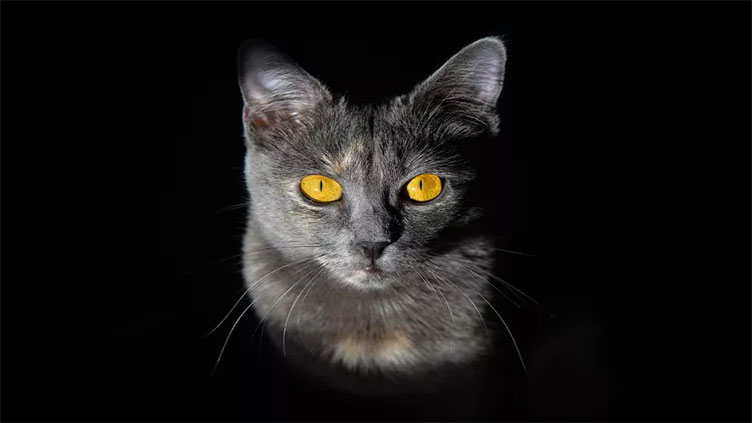Cats, other mammals can glow in the dark, study finds

Technology
A new study has found that mammals can glow in the dark
(Web Desk) – Research by the Western Australian Museum and Curtin University revealed that it's "extremely common" for mammals, including cats, to contain fluorescence, enabling them to shine in the night.
After using ultraviolet light to examine 125 preserved mammal species representing 27 living mammalian orders and 79 families, the researchers discovered "apparent fluorescence" in all mammal samples.
The study claimed the preserved animal samples absorbed short-wavelength ultraviolet light and then emitted the light “as a lower-energy colored, often pink, green or blue, glow.”
The Western Australian Museum and Curtin University revealed that fluorescent compounds were found in numerous animal materials such as fur, skin, teeth, bones, feathers, and claws.
Some of the many mammals reported to fluoresce by the study include rabbits, squirrels, and dormice.
"We were quite curious to find out about fluorescence in mammals," said Kenny Travouillon, lead author and curator of Mammalogy at the Western Australian Museum, per ABC News.
"By using the spectrophotometer in the School of Molecular and Life Sciences at Curtin University, we were able to measure the light that was emitted from each specimen when exposed to UV light."
Travouillon added that the white fur in animals like the koala, short-beaked echidna, southern hairy-nosed wombat, and cat emitted a "large amount of white fluorescence."
He also revealed that the black hairs of a zebra didn't glow despite the animal's white hairs glowing.
"Fluorescence was most common and most intense among nocturnal species and those with terrestrial, arboreal, and fossorial habits," Travouillon concluded.
In the study's conclusions, researchers suggest that future research should use non-preserved animals that are either alive or have not been dead for long.
This is due to the scientists discovering evidence that preservation methods could affect the intensity of fluorescence.


